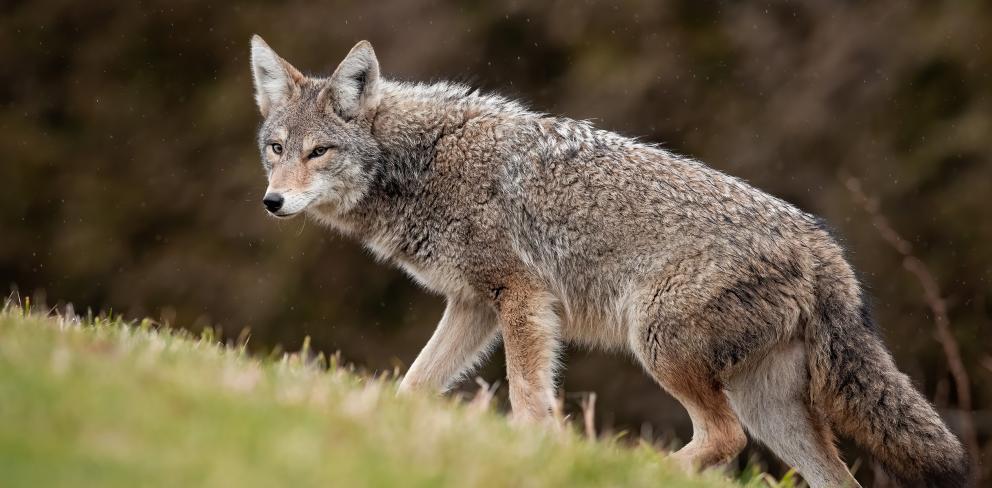You are here
Coyotes in Urban Areas

As towns and cities continue to grow across Alberta, so does the human encroachment on many species of wildlife and their habitat. For the most part, it’s never really too alarming when you see a wild rabbit in a neighbourhood, or spot a deer in an urban park. Things get difficult, and complicated when we see urban coyotes because they have learned to adapt to the changes in their environment, and this is causing issues for pet owners, veterinary practices as well as government agencies and officials. Protecting our pets from physical harm will always be of the utmost concern, however it's equally important to protect our pets from potential disease which coyotes may leave behind in their feces.
Alberta is now a hot spot for a rare and potentially fatal disease known as alveolar echinococcosis (AE) -- a disease caused by a parasitic infection transmitted from canines. According to research through University of Calgary as well as a University of Alberta Faculty of Medicine and Dentistry report, the disease which originated from Europe has become established in Alberta, Saskatchewan and British Columbia. There have been a total of 17 cases in humans found in Alberta. The ABVMA issued information on Tapeworms [Echinococcus Multilocularis] which offers important tips and steps to take to prevent infection in dogs and cats.
Echinococcus multilocularis (E. multilocularis) is a tapeworm that can infect many animal species as well as humans. The adult stage of the parasite lives in the intestine of a canid definitive host (e.g. fox, coyote, dog) and these adult tapeworms produce eggs which are excreted with the host feces. The tapeworm eggs in the feces are able to contaminate vegetation, soil, and potentially water. When these eggs are ingested by an intermediate host (mostly rodents), they hatch and the larvae migrate to the liver of the host and multiply causing severe lesions that are fatal to the host. When a canid ingests an infectious rodent, it becomes infected and the cycle continues.
How can humans get infected?
- Eating fruits and vegetables contaminated with eggs is believed to be the most common mode of infection.
-
By handling contaminated soil (e.g. children playing outside and not washing hands before eating).
- By ingesting the eggs from an infected pet’s fur or other areas in the home that could have been contaminated with fecal matter. The eggs are microscopic in size and so not visible to the human eye.
Humans are accidental hosts and are not able to transmit the disease to other humans or animals.
The cities of Calgary and Edmonton feature informative tips and background about the issue of Coyotes in both regions. Another valuable resource is your pet’s veterinary team. If you have any questions or concerns about the safety and well being of your pets, and even you or your family, be sure to contact your veterinary practice for more information.
Tips for good coyote-human relations
- Enjoy all wildlife from a distance
- Never feed coyotes or leave pet food (including bird seed) outside
- Don’t leave children or pets unattended
- Carry a loud whistle or other noise-maker with you in areas that have coyotes
- Throw all garbage in trash containers and ‘poop scoop’
Read the ABVMA fact sheet on how to prevent infection in you and your pet.
Sources:
The American Journal of Tropical Health and Hygiene
The City of Calgary Urban Coyotes A Vital part of Calgary’s wildlife
The Edmonton Urban Coyote Project
| Attachment | Size |
|---|---|
| 633.2 KB |
